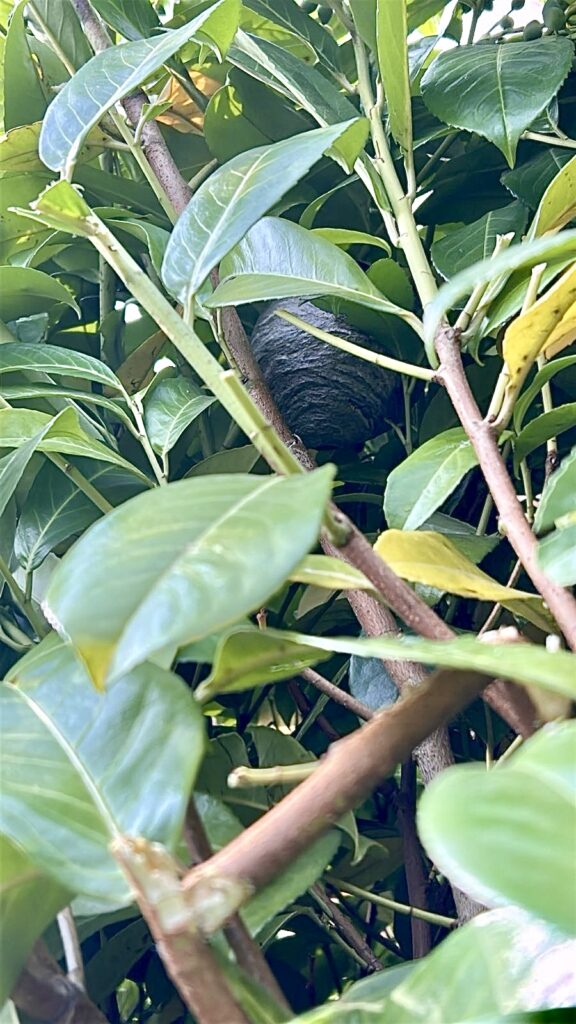
Why Wasp Nests in Hedges Pose a Serious Risk to Homeowners
Table of Contents
- 1. Introduction
- 2. Why Wasps Nest in Hedges
- 3. The Dangers of Hedge Wasp Nests
- 4. How to Spot Wasps in a Hedge
- 5. Staying Safe Around Hedge Nests
- 6. What to Do If You Find a Nest
- 7. Conclusion
1. Introduction
Wasps become more active in Oxfordshire during late spring and summer. Wasps in a hedges can create a serious hazard for anyone enjoying their garden. Wasp nests in hedges often go unnoticed until it’s too late. One accidental brush against a bush can trigger an aggressive swarm.
Homeowners in Didcot, Wallingford, and nearby areas should take these risks seriously. Early detection and professional help can prevent painful stings and health emergencies.
2. Why Wasps Nest in Hedges
Hedges offer ideal shelter for wasps. The dense branches protect nests from wind, rain, and predators. Hedges also remain relatively undisturbed, especially deeper sections, making them perfect hiding spots for a growing colony.
Common species such as the German wasp (Vespula germanica) and the common wasp (Vespula vulgaris) prefer to build nests from chewed wood and saliva, attaching their paper-like structure to thick branches. These nests grow in size as summer progresses and can eventually house thousands of wasps.
3. The Dangers of Hedge Wasp Nests
Wasps in a hedge poses several dangers, especially in family gardens:
- Hidden threat: Hedge nests remain invisible until disturbed by gardening, pets, or children playing nearby.
- Aggressive defence: Wasps protect their nest fiercely. Even a small vibration can provoke an attack.
- Multiple stings: Unlike bees, wasps sting multiple times. A swarm of wasps can cause dozens of painful stings.
- Health risks: Wasps trigger allergic reactions in some people. Anaphylaxis requires emergency treatment and can be life-threatening.
- Increased activity in late summer: Wasps become more territorial and aggressive as the colony reaches its peak.
4. How to Spot a Wasps in a Hedge
Early detection helps prevent a dangerous situation. Watch for these signs:
- Consistent wasp traffic in and out of one spot in a hedge
- Buzzing sounds coming from deep within the foliage
- Visible paper-like material if the nest is near the outer branches
- Wasps flying in patterns or circling the same area repeatedly
If you notice one or more of these signs, avoid the area and call a pest control expert immediately.
5. Staying Safe Around Hedge Nests
If you suspect wasps have nested in your hedge, use these safety tips:
- Keep children and pets away from the area
- Do not trim or cut the hedge until a professional assesses the situation
- Cover food and drink when eating outdoors
- Move calmly—avoid sudden movements that could alarm nearby wasps
- Keep bins sealed and clean to avoid attracting more wasps
6. What to Do If You Find a Nest
Do not attempt to remove the nest yourself. Wasps defend their colony aggressively, and DIY treatments often make things worse. Instead:
- Keep your distance and do not disturb the hedge
- Warn others to stay away from the area
- Contact a professional wasp control service immediately
At Shire Pest Solutions, we provide safe, fast, and effective wasp nest removal across Oxfordshire. Our trained technicians assess the nest, apply specialist treatments, and advise on preventing future infestations. We handle hedge nests with minimal disruption to your garden.
7. Conclusion
Wasp nests in hedges pose serious risks to households across Oxfordshire, especially in garden spaces. Their hidden nature and aggressive behaviour make them a threat to children, pets, and anyone enjoying the outdoors. Spotting the warning signs early and getting expert help ensures your garden stays safe.
If you notice increased wasp activity near your hedge, don’t ignore it. Contact Shire Pest Solutions for a professional inspection and treatment. We also recommend reading our related post on Seasonal Pest Problems in Didcot and Wallingford for more pest safety tips.
